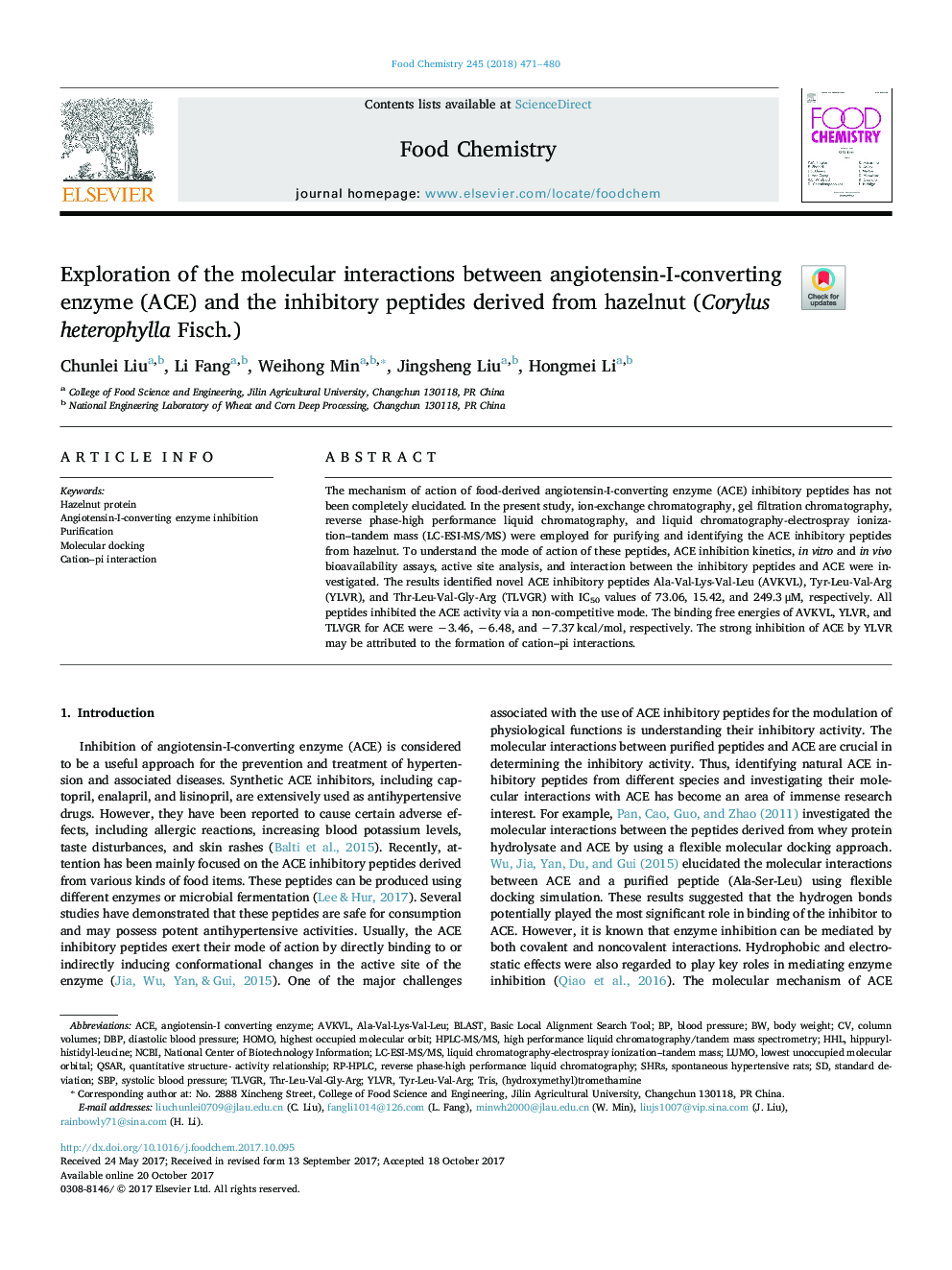| Article ID | Journal | Published Year | Pages | File Type |
|---|---|---|---|---|
| 7586391 | Food Chemistry | 2018 | 10 Pages |
Abstract
The mechanism of action of food-derived angiotensin-I-converting enzyme (ACE) inhibitory peptides has not been completely elucidated. In the present study, ion-exchange chromatography, gel filtration chromatography, reverse phase-high performance liquid chromatography, and liquid chromatography-electrospray ionization-tandem mass (LC-ESI-MS/MS) were employed for purifying and identifying the ACE inhibitory peptides from hazelnut. To understand the mode of action of these peptides, ACE inhibition kinetics, in vitro and in vivo bioavailability assays, active site analysis, and interaction between the inhibitory peptides and ACE were investigated. The results identified novel ACE inhibitory peptides Ala-Val-Lys-Val-Leu (AVKVL), Tyr-Leu-Val-Arg (YLVR), and Thr-Leu-Val-Gly-Arg (TLVGR) with IC50 values of 73.06, 15.42, and 249.3â¯Î¼M, respectively. All peptides inhibited the ACE activity via a non-competitive mode. The binding free energies of AVKVL, YLVR, and TLVGR for ACE were â3.46, â6.48, and â7.37â¯kcal/mol, respectively. The strong inhibition of ACE by YLVR may be attributed to the formation of cation-pi interactions.
Keywords
TRISHHLSHRsSBPDBPRP-HPLCNCBIACEHPLC-MS/MSLC-ESI-MS/MSAngiotensin-I Converting EnzymeBasic Local Alignment Search Toolstandard deviationHomoBlastQSARcolumn volumesdiastolic blood pressuresystolic blood pressureBlood pressureLUMONational Center of Biotechnology Informationspontaneous hypertensive ratshippuryl-histidyl-leucinebody weightPurificationMolecular dockingreverse phase-high performance liquid chromatographyLowest Unoccupied Molecular Orbital
Related Topics
Physical Sciences and Engineering
Chemistry
Analytical Chemistry
Authors
Chunlei Liu, Li Fang, Weihong Min, Jingsheng Liu, Hongmei Li,
